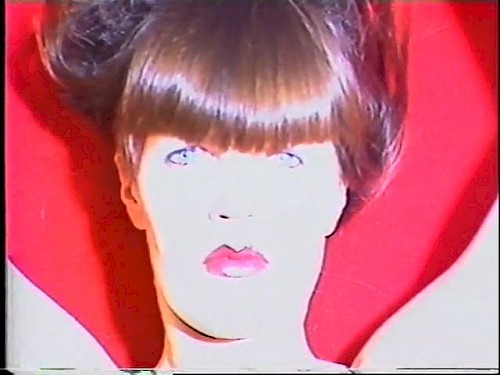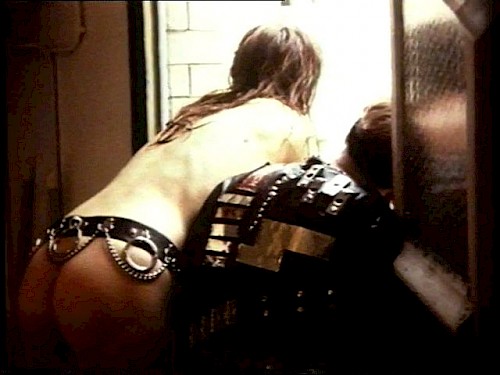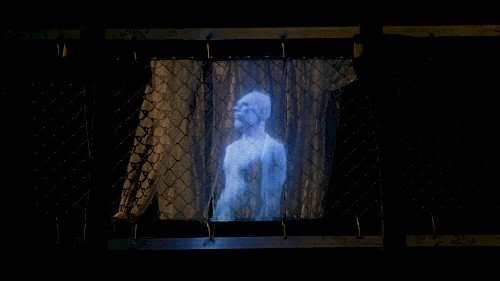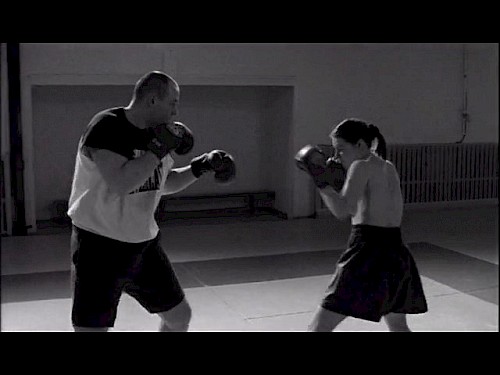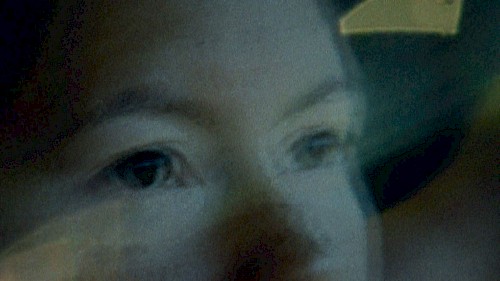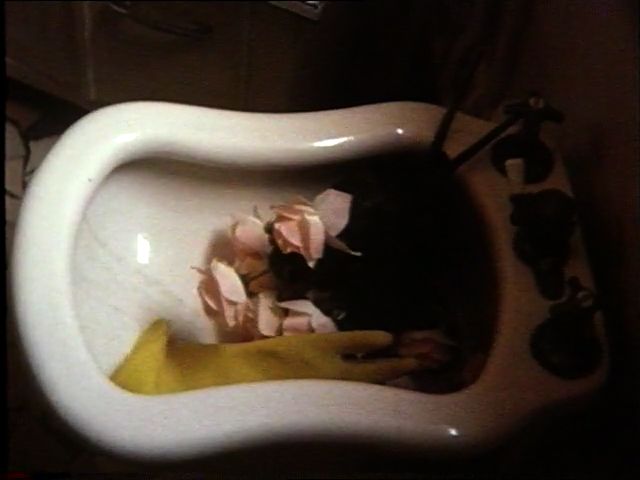A power relation is articulated on two elements which are essential for it to be precisely a power relation that “the other“(the one on whom it is exercised) is well recognized and maintained until the end as subject of action and that, in front of the relation of power, a whole field of answers opens up, reactions, effects, possible inventions.
—
Michel Foucault
Power Relations is a program of films and videos from the 1980s to the present by Finnish artists working on gender, post-colonial and female gaze issues
The program begins with Haarband, a video performance by Mervi Kytösalmi, a pioneer of video art in Finland. In Haarband, Kytösalmi frames herself in a medium shot, turns her head from left to right in a repetitive, frenetic and almost violent manner, transforming herself into a human metronome to the rhythm of a Japanese pop song. The choreography, precise and minimal, can also be seen as the setting up of a protected subjective space, which lasts the time of the song. The next video, The Eiffel Tower by Rosa Liksom, is a punk-feminist fantasy. A voiceover informs us that a woman occupies the “phallus of Paris” - the Eiffel Tower filling up at the end with all female society. Another work, Freaky Crew, by the same artist, is a collaboration with a carnivalesque fashion collective, Plastic Pony. Their message serves to playfully question the idea of gender, so that new identities can be formed.
Milla Moilanen’sWanted takes us back into the dark past of scientific research. In this haunting video, Moilanen uses the famous archives of the Swedish National Institute for Racial Biology, founded in 1922 at Uppsala University. The nomadic Sámi people, inhabiting the northern region of Scandinavia, Finland and part of Russia, have been categorized as an inferior race. Their skeletons and bones have been kept in the Institute’s collection. There is no need to point out that this research was nothing but disguised racism, sadly common in its time.
In Salla Tykkä’s Power , a young woman, bare-chested, enters a boxing ring to fight a boxer much thicker than herself. This particularly physical work is more than a metaphor for competition and struggle in society, where women still have to do much more than men to survive. Mox Mäkelä’s The Edge is a story of care and trust between two women, one of whom feels constantly on the edge. The visual aspect of the work gives us a tangible, calm and haptic presence. The characters themselves are absent, giving the viewer space to think about this work.
The theme of hair returns in the video Venus by Hinni Huttunen. This work aims to reclaim the power of the objectified figure of a woman, such as the one combing her hair in Edgar Degas’ famous painting, La Toilette. In this painting, we only see the back of a woman, where Huttunen looks at us on camera while violently combing her hair.
For the end of this program we return to Sàpmi, the ancestral land of Sàmi (or Saami in Finnish), this people living in the north of Scandinavia. Govadas by Elina Oikari is a personal travelogue, saddened by the fate of this people as well as the environment of northern Finland, where the extraction of natural resources has led to the destruction of nature by the Nordic states and industrial companies stemming from globalized capitalism. In Dolastallat, Marja Helander also travels to the deserted ruins of this industrialization, but her approach also includes post-colonial and post-modern views. Having a Sàmi background herself, Helander relativizes the question of the return to an original purity, showing us how the nomadic culture of the Sàmi has also adapted to the technological tools of mainstream culture. A certain tenderness and nostalgia remain in the place of the stuffed animal, like an echo of ancient rituals practiced in the past.
—
Kari Yli-Annala
